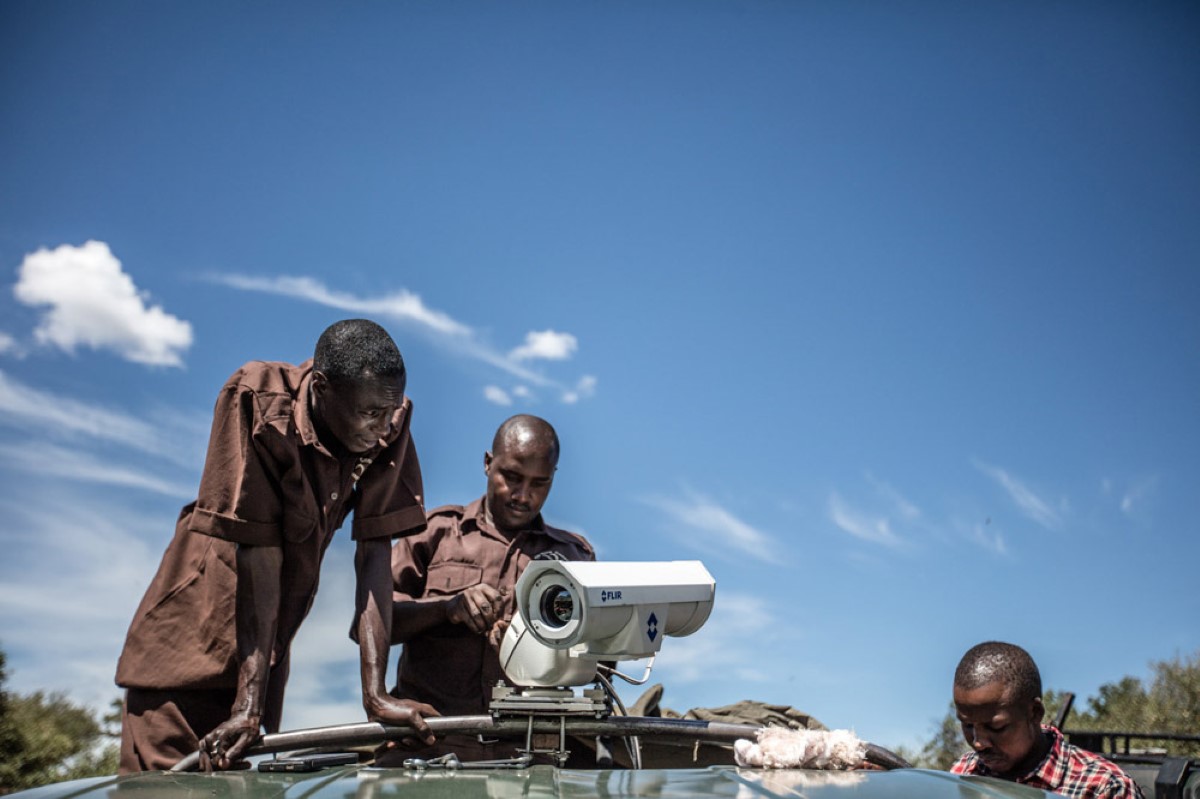FLIR Products and the Environment

By FLIR Staff
Today is Earth Day, a day when people reflect on how they interact and impact the world around them.
In recognition of Earth Day, we wanted to consider some of the ways our technology is being used to visualize the world in unique ways and even improve the world and environment we live in.
Below are a few examples of how our customers and people have used FLIR thermal imaging technology as it relates to environmental sustainability.
Wildlife Conservation
The World Wildlife Fund (WWF) is instrumental in their work to protect wildlife, their habitats, and ‘the future of nature.’ Recently, NPR reported on WWF’s use of FLIR’s thermal imaging technology and help stop poachers in Africa. Poachers have decimated populations of elephants and rhinos, but now park rangers are helping protect animals in these habitats with thermal cameras combined with WWF’s own analytics software to help decipher humans from animals in protected areas.
River and Marine Clean-up
FLIR and Raymarine products have been used in multiple ways to help with environmental clean-up in our oceans and waterways. For instance, the team from Clean River Project uses our Raymarine Dragonfly fishing electronic and sonar equipment to identify abandoned cars and other junk under the surface of the Merrimack River in Massachusetts. The submerged vehicles release oil, gas, and other toxins and can be harmful to river habitats. To date they’ve pulled over 60 vehicles from the water. Additionally, FLIR Marine thermal cameras have been used in crude oil or diesel spill clean-up operations.

Home Energy Efficiency
According to the North American Insulation Manufacturers Association (NAIMA), more than 90 percent of U.S. homes are under-insulated 2 resulting in lost energy efficiency, increased heating and cooling costs, and uncomfortable homes. Home inspectors and energy auditors have been using thermal imaging for years to spot energy loss in homes whether it’s heating or cooling. Homeowners, however, can use the FLIR ONE combined with a great app from Owens Corning to check for insulation issues on their own. The Comfort Tracker app guides you through a home insulation assessment, helping you decide where work is needed to improve your home’s energy efficiency.

Renewable Energy Source Maintenance
With solar panels becoming more and more common throughout the world, solar operators need a quick way to inspect panels to ensure efficient power generation, long life, and a high return on investment. Because one broken panel can affect the entire panel system, it’s critical for operators to solve issues quickly, and they’ve turned to thermal imaging to help. Solar operators can use thermal to scan large areas during normal operation to see which panels may not be operating, all without taking panels out of commission. Not only are FLIR’s handheld thermal cameras like the FLIR T1020 being used this way, drone operators mount our Vue Pro or DJI Zenmuse XT powered by FLIR to the bottom of a drone to handle the job from the sky.
Greenhouse Gas Emissions
FLIR’s Optical Gas Imaging (OGI) cameras have the ability to visualize and find emissions of various hydrocarbons like methane. In the past, natural gas leaks were very time consuming and difficult for gas operators to track down and stop. With cameras like the FLIR GF320, operators have the ability to locate leaks and stop them from become much bigger problems, saving both money and reducing their own carbon footprint.
In fact, Racing Extinction, a documentary by filmmaker Louie Psihoyos, premiered at Sundance in January of 2015 and on Discovery Networks this past December. The team outfitted a specially modified Tesla with a FLIR science thermal camera (SC8300) specially filtered to see carbon dioxide (CO2) gas. The filmmakers then drove around urban areas, and visualized emissions that were otherwise invisible to the naked eye. See a clip here of this remarkable video or learn how to purchase or stream it here.

Get outdoors this weekend and have a great Earth Day, and join the conversation in the comments below.